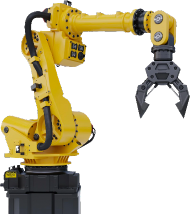Summary
According to data reported by the Global Burden of Disease (GBD) study in 2018, lung disease is among the top 20 diseases causing Disability-Adjusted Life Years (DALY). DALY is a measure used to describe the burden of disease by combining the burden of death and the burden of disease living with disability. Lung disease can cause decreased lung function, disability, and affect an individual's quality of life. Prevention, early diagnosis, treatment, and management of lung disease are essential to reduce the burden of this disease in society and improve overall lung health.
The importance of computer-aided diagnosis (CAD) in chest X-Ray (CXR) is very significant in the field of radiology. This technology utilizes artificial intelligence (AI) in the form of Deep Learning (DL) with artificial neural networks (ANN) to analyze radiological images and assist doctors in making diagnoses. The ANN model has the ability to learn complex patterns in lung radiology images that are difficult for humans to recognize, so it can recognize the typical characteristics of various lung diseases if trained on CXR data. CAD using ANN can improve the accuracy of diagnosis, as well as reduce the subjectivity of doctors when making a diagnosis. However, it is important to note that CAD does not replace the role of doctors, but rather acts as a tool that provides initial recommendations. The final interpretation and decision on diagnosis remain in the hands of the doctor.
One of the main obstacles in the development of ANN for CAD is data limitations. In the medical field, the available datasets tend to have a small amount of data, or have a large imbalance between the amount of data for each diagnostic category (data imbalance) due to limitations that exist during the data collection process. To overcome the problem of limited data, Transfer Learning (TL) can be used. To overcome data imbalance, the Self-Supervised Learning method is one solution that can be used. In our previous research, SSL methods such as Swapping Assignments between Views (SwAV) have been proven to be able to make ANN models achieve better accuracy, even in conditions where there is severe data imbalance, but the model can only achieve an Area Under Curve (AUC) value of 0.952 and an F1 score of 0.821. Further development of this method allows the ANN model to achieve a higher level of accuracy, and can improve the effectiveness of early screening for lung disease. With proper use, this can save research costs from hospitals and provide efficient solutions in healthcare.
As a further development of previous research, we use a new algorithm that is known to be more accurate to handle data imbalance. This new ANN model is then implemented as a web application.
Product Impact
Product Uniqueness
Other Docs





